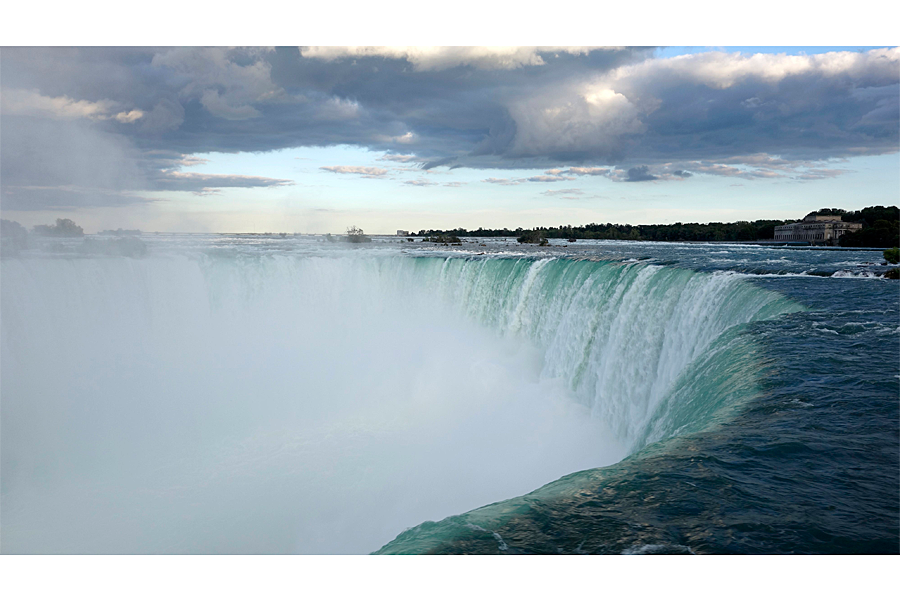Why we might have to turn off Niagara Falls for a while
Loading...
Certain parts of the Niagara Falls may run dry this summer, depending on the outcome of a New York state proposal to fix two bridges.
To replace the 115-year-old bridges that connect various regions of Niagara Falls State Park, officials may have to drastically reduce the flow of water on the American side of the falls.
Three adjacent waterfalls comprise the Niagara Falls – the American Falls and Bridal Veil Falls on the US side, and Canada’s Horseshoe Falls. By building a structure called a cofferdam, the Niagara River will be completely redirected to the Canadian side, leaving the two American falls dry, or “dewatered.”
“Dewatering the American and Bridal Veil Falls and channel will have a dramatic, albeit temporary, visual impact on Niagara Falls State Park,” New York state officials wrote in a project report issued by the Department of Transportation and the Parks, Recreation, and Historic Preservation agency.
The outcome of dewatering, the officials said, will initially be a tourist draw – “a once-in-a-lifetime opportunity to see the falls and river channel without water.” But as tourism season draws into summer, attendance is projected to decline.
The dewatering process, while seemingly radical, has been executed before: In 1969, the U.S. Army Corps of Engineers conducted a study of the falls’ effects of erosion.
Just like how it was then, the proposed dewatering would expose rock formations that lie beneath the American Falls and Bridal Veil Falls – a rare sight to behold. It will also attract more tourists to the Horseshoe Falls, which already contain 85 percent of the Niagara River flow. With the possible advent of the cofferdam, the gushing scenery on the Canadian side could become even more robust.
While the entire process of replacing the bridges will take up to two years, the dewatering structure will be in place for six months.
The two deteriorating bridges in question have been problematic for more than a decade. Arching over the Niagara River as a pedestrian path to Goat Island, the ailing bridges were closed in 2004 and temporary overpasses were built above them. Since then, the interim structures have sufficiently provided foot and bicycle access but officials say they lack aesthetic value and limit the views.
The cofferdam, which will likely be in proximity to the 1969 structure made of 28,000 tons of rock and dirt, will provide a dry area for demolition and construction of the new bridges. The water redirecting structure is not anticipated to have any long-term consequences on the riverbed or falls, the project report says, but short-term impacts include erosion of exposed on-site soils and increased traffic, dust, and noise due to construction.
“These activities are expected to be short-term, intermittent in nature, and largely contained on site,” the report reads, “and would cease when construction was completed.”
But despite the growing necessity to replace the century-old bridges, not everyone is on board with the state’s dewatering plan.
Paul Gromosiak, a writer and historian based in Niagara Falls, remembers the haunting lull during the 1969 dewatering. He told the Orange County Register that he believes the state should find an alternative method to replace the bridges.
“When you take something so impressive, so mesmerizing and affect it in such a significant way,” Mr. Gromosiak said, “to me, it just destroys the impact it should have.”
A public hearing will be held Wednesday evening in Niagara Falls to discuss the proposed plan.






